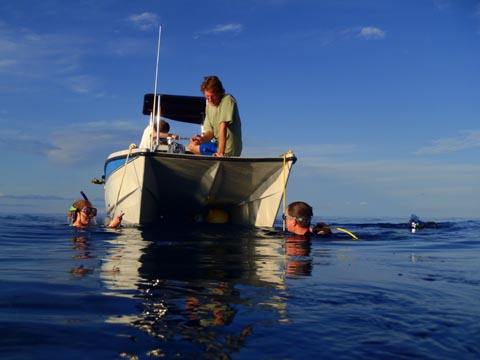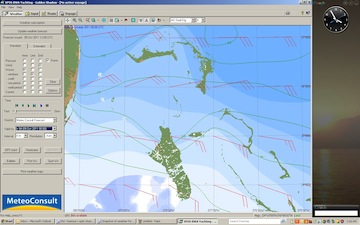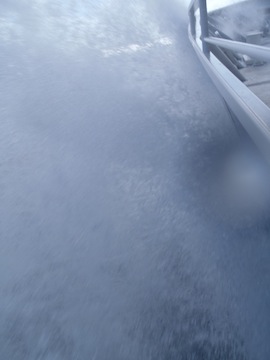Conducting a research expedition in the Bahamas during hurricane season (June 1 – November 30) can be a risky venture. One never knows where or when a tropical storm (which is a low pressure system) will develop. Depending on the size and intensity of the storm, sometimes it’s simply a matter of moving your expedition out of the way of the expected path. Sometimes you have to steam for safe harbor and fly your researchers out of harm’s way, which was the case for the end of the Inaguas and Hogsty leg of the Bahamas Expedition (click here to read the blog “Irene and Emily: A Tale of Two Storms”).

However, when a high pressure systems develops over a coral reef researcher’s expedition area, no one thinks of calling it off. High pressure systems are areas of fair weather and blue skies. Unfortunately, an area with extremely high pressure may bring some pretty intense winds. Yesterday, a cold front began passing through the Bahamas. Behind the front is an area of very high pressure. The winds we experienced before the front were very calm and the sea state (wave height) was nearly flat calm. Since the cold front, the winds have increased to more than 20 knots (22 m.p.h.) and the sea state is around 2 m (6.5 feet). Over the next week the winds are expected to increase and become sustained at 30 knots (33 m.p.h). By the way, tropical storm force winds begin at 34 knots. This will increase the seas to 3 m (10 feet) or more.

As you look at the chart with wind speed and direction and sea state, you will notice several different shades of blue. They indicate the height of the seas. The dark blue indicates areas of wave heights of 3 m. Although, we are currently in the zone of 2 m seas, the area of 3 m seas are expected to move south. The waters around our expedition zone will be in this zone for several days. With these kinds of winds, wave heights, and lack of sheltered area for anchorage, Captain Steve, Chief Scientist Andrew Bruckner, and Executive Director Captain Phil Renaud, have decided that it is a prudent decision to call off the rest of the expedition for the safety of the researchers, crew of the Golden Shadow and Golden Osprey, and the ship’s themselves.

Even though the rest of the expedition is being cancelled, it is not over. Dr. Judy Lang wanted to share her “Friend of the Day!” One of Judy’s favorite reef organisms is the Lettuce Sea Slug (Elysia crispata (formerly Tradachia)). Sea slugs are in the phylum mollusca (soft-bodied) organisms that have a mantle that secretes a shell and move around on a muscular foot. However, a unique thing about sea slugs is that they are gastropods (snails) that lack a shell. As you can see in the photo below, the Lettuce Sea Slug has beautiful “ruffles” that form a double row along its dorsal (back) surface that come in a variety of ruffles depending upon the color of the algae upon which they forage. Judy’s favorite thing about the Lettuce Sea Slug is that it incorporates the chloroplasts (cells that aid the algae in photosynthesis) into its own tissues. This allows the Lettuce Sea Slug to convert light energy into chemical energy (sugars), supplementing its diet for a short while.

We are currently steaming for Nassau, where the researchers will be traveling back to their home ports. Thank you for following the Bahamas leg of the Global Reef Expedition. Please keep track of updates here and on our Global Reef Expedition and Living Oceans Foundation websites.
Written by Jack Seubert
(Photo/Images by: 1, 3 Jack Seubert, 2 CAPT Steve Breen, 4 Ken Marks)
To follow along and see more photos, please visit us on Facebook! You can also follow the expedition on our Global Reef Expedition page, where there is more information about our research and our team members.